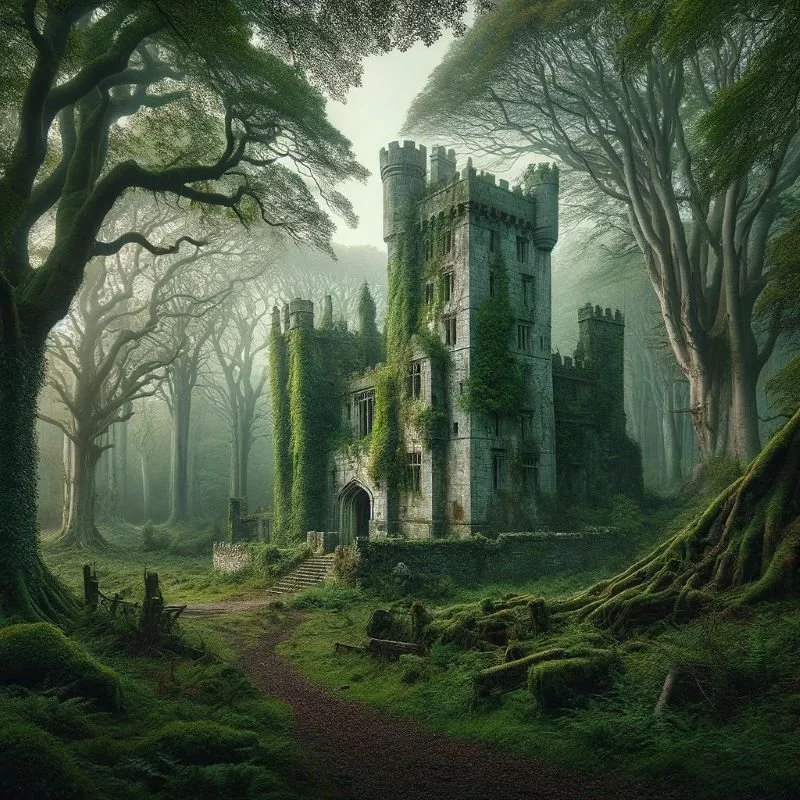In the alluring tapestry of low fantasy, magic reveals itself not with a thunderous roar but in quiet murmurs. Distinct from the grandiose enchantments and epic spellcasting of high fantasy, the magic in low fantasy gently intertwines with the everyday, becoming a discreet yet integral strand in the fabric of a world strikingly similar to our own. It’s in this understated existence that the magic of low fantasy finds its charm and appeal, lending a touch of the extraordinary to a world that mirrors the familiar contours of reality.
Our exploration, ‘Believable Magic in Low Fantasy,’ delves into the artistry and finesse with which authors and storytellers infuse magic into their narratives. It’s a journey through the nuanced realms where magical elements are seamlessly integrated, creating a sense of wonder that is both enthralling and believable. This subtle crafting of magic not only grounds the fantastical in reality but also significantly enriches the genre, offering a delicate balance between the known and the unknown, the mundane and the magical.
Join us as we navigate the intricate pathways of low fantasy, where magic subtly colors the world without overpowering it, and discover how this restrained enchantment captivates the imagination, inviting readers to believe in the magic that lies just beneath the surface of the ordinary.
The Foundations of Believable Magic in Low Fantasy
Creating a Framework of Realistic Rules and Limitations
One of the hallmarks of believable magic in low fantasy is the establishment of well-defined rules and limitations. This framework is essential in making magic feel like a tangible and consequential part of the world, rather than an arbitrary plot device. By setting clear boundaries and laws for how magic operates, it gains credibility and integrates more naturally into the narrative fabric, allowing readers to understand and believe in its influence within the story’s universe.
Drawing from the Familiar: Myths and Historical Echoes
Incorporating elements from real-world myths, folklore, and historical practices can significantly enhance the authenticity of magical aspects in low fantasy. By weaving in familiar mythological and historical threads, the magic becomes more relatable and grounded. This approach creates a bridge between the known and the mystical, making the fantastical elements more accessible and believable to the audience.
Integration into Everyday Life
Magic Amidst the Mundane: A Subtle Presence
In low fantasy, magic often intertwines with the everyday aspects of life, subtly altering and influencing the world in small, yet meaningful ways. This integration highlights how magic is not just a distant, extraordinary force but a part of the characters’ daily experiences, affecting their reality in both overt and subtle manners.
Subtle Manifestations: Nuanced Expressions of Magic
The portrayal of magic in low fantasy typically eschews grandiose, spectacular displays in favor of more understated manifestations. This subtlety ensures that magic feels like a natural part of the world, blending seamlessly with the environment and the characters’ lives. Such a nuanced approach allows magic to be present without overpowering the story or characters, maintaining a balance between the ordinary and the extraordinary.
Character Interaction with Magic
Realistic Reactions to the Magical
Characters in low fantasy respond to magical elements in ways that mirror their reactions to other aspects of their lives. This range of responses – from awe and fear to acceptance and indifference – depends on the prevalence and understanding of magic in their world. These realistic reactions help to ground the story, making the presence of magic more plausible and integrated into the characters’ experiences.
Magic as an Integral Character Trait
Rather than being used solely as a tool or plot mechanism, magic in low fantasy often serves as an intrinsic character trait. It influences the characters’ personalities, shapes their destinies, and impacts their relationships and interactions with the world around them. By making magic an integral part of a character’s identity, it becomes a more believable and integral component of the story, enhancing the narrative’s depth and complexity.
Believable Magic as a Pillar of Low Fantasy
The creation of believable magic is a foundational aspect of low fantasy, lending depth and authenticity to the genre. By grounding magic in reality, integrating it into everyday life, and weaving it into the fabric of character development, low fantasy offers a unique and immersive experience. This approach to magic not only captivates the imagination but also resonates with the reader’s sense of reality, making the fantastical elements of low fantasy both compelling and credible.
Crafting the Magical Narrative in Low Fantasy
Ensuring Magic Enhances Rather Than Overwhelms
In low fantasy, the narrative artfully balances fantastical elements with a solidly realistic setting. It’s essential that the magical aspects feel like a natural, integrated part of the world, rather than an extraneous or overpowering force. This delicate equilibrium ensures that the story maintains its plausibility and relatability, allowing readers to easily immerse themselves in a world where the extraordinary coexists with the familiar.
Coherent World-Building: The Foundation of Believability
Effective world-building forms the cornerstone of low fantasy. The narrative construct must be meticulously planned so that the existence and operation of magic appear logical and consistent within the story’s universe. This coherence in world-building is what makes the fantastical elements feel authentic and credible, enhancing the reader’s engagement with the story and its characters.
The Role of Magic in Plot Development
Propelling the Plot with Magical Elements
In the realm of low fantasy, magic often plays a pivotal role in driving the story forward. It can act as a catalyst for change, conflict, and eventual resolution, all while staying anchored in the story’s reality. This integration of magic into the plot ensures that it is not just an aesthetic addition but a dynamic component that actively shapes the narrative’s progression and the characters’ journeys.
Symbolism and Thematic Resonance
Beyond its functional role, magic in low fantasy frequently embodies deeper symbolic meanings or thematic significance. It can represent various concepts, from personal transformation to broader societal issues, adding substantial depth and interpretive layers to the narrative. This use of magic as a metaphor or thematic device enriches the story, inviting readers to explore beyond the surface plot and engage with the underlying messages and reflections.
Weaving Magic into the Fabric of Storytelling
In low fantasy, the crafting of a magical narrative is a nuanced art that requires balancing the wondrous with the realistic, weaving a believable world where magic not only exists but thrives in harmony with the mundane. By intertwining magic with plot development and thematic exploration, low fantasy stories achieve a richness and depth that resonate with readers. This careful crafting of the magical narrative is what makes low fantasy a genre that continually captivates, challenges, and enchants its audience, inviting them to explore a world where magic is both a reality and a revelation.
Believable magic in low fantasy is akin to a skillfully choreographed dance of the wondrous amidst the everyday, masterfully balancing the extraordinary within the realms of the plausible. This intricate interplay is a testament to the genre’s unique capacity to bewitch and fascinate, all while keeping its roots firmly planted in a world that reflects our own. In these narratives, the subtle infusion of magic not only enriches the storyline but also beckons readers to perceive their reality with a renewed sense of wonder and possibility.
In the universe of low fantasy, magic transcends its role as a mere narrative component; it becomes a transformative lens, altering our perception of the ordinary and the familiar. It invites us to envision a world where the lines between the tangible and the fantastical are gracefully blurred, where the realms of what is real and what could be exist in harmonious coexistence.
The essence of low fantasy lies in its ability to weave magic into the fabric of a recognizable world, challenging us to imagine and believe in the enchantment hidden within the nuances of everyday life. It is this delicate balance of the mystical and the mundane that captures our imagination, leaving an indelible imprint on our understanding of storytelling, magic, and the endless possibilities that lie just beyond the edge of the known.






0 Comments